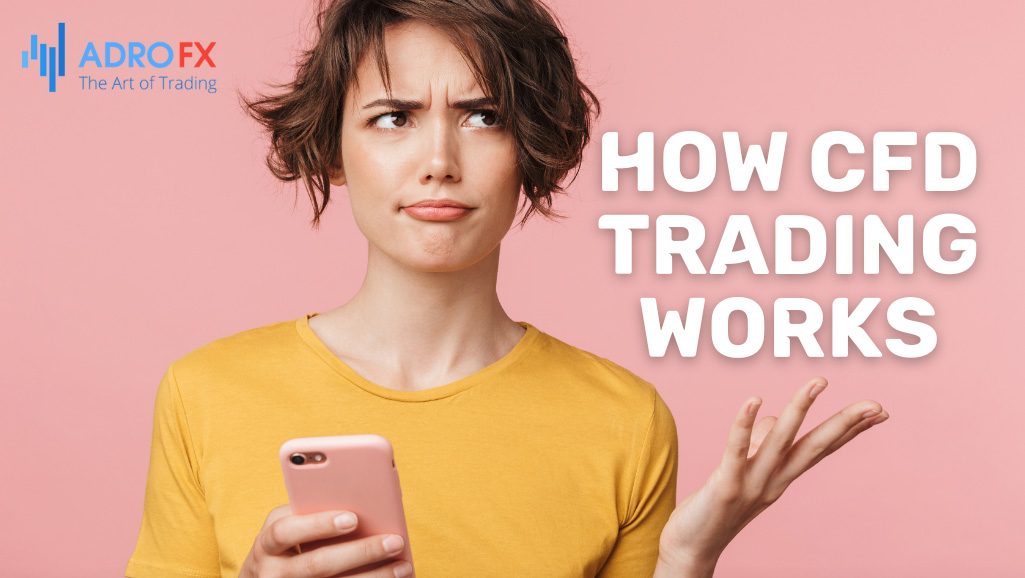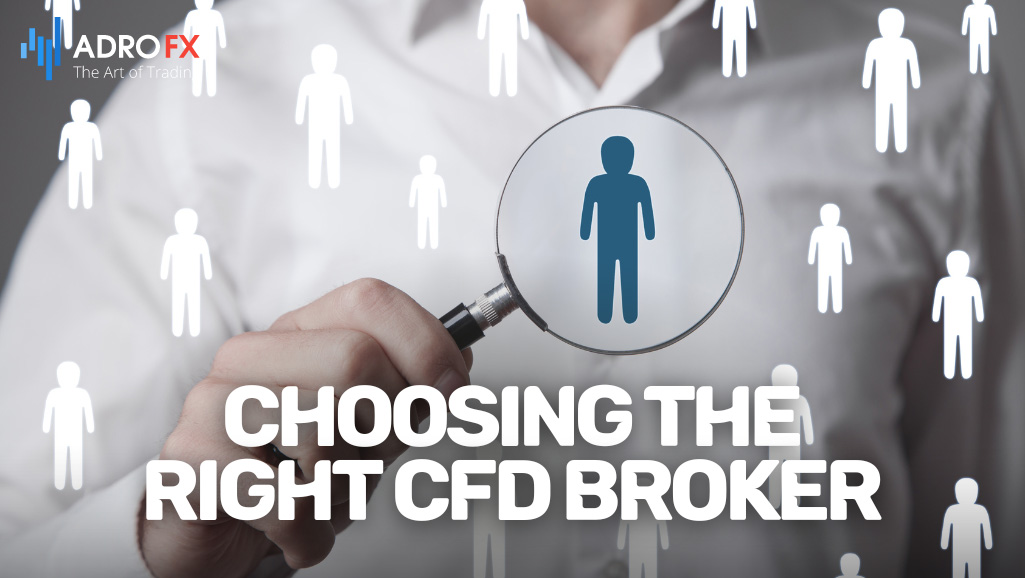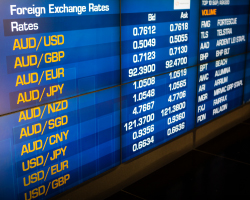Understanding the Basics of CFD Trading: A Beginner's Guide

CFD trading has gained immense popularity among traders in recent years due to its unique characteristics and potential for profit. Before delving into the world of Contracts for Difference (CFDs), it's crucial to grasp the fundamentals of this trading instrument. Understanding the basics is essential for navigating the complexities of CFD trading effectively and making informed investment decisions.
Understanding CFDs
CFDs, or Contracts for Difference, represent a financial derivative avenue enabling traders to engage in speculation on the fluctuations of diverse financial instruments, such as stocks, indices, currencies, commodities, and cryptocurrencies, sans the necessity of owning the underlying asset. Instead, CFD traders establish agreements with brokers, exchanging the variance in asset value from contract initiation to closure.
This distinctive feature of CFDs empowers traders to capitalize on both upward and downward market movements. Whether foreseeing asset price escalation, prompting a "buy" or anticipating a decline, triggering a "sell," CFD trading diverges from conventional investment paradigms where ownership of the underlying asset is a prerequisite. This flexibility and leveraged approach underpin the allure of CFDs for market participation.
Through leveraging margin, traders can augment their exposure to the underlying asset, potentially magnifying returns. Yet, it is imperative to grasp that leverage concomitantly heightens the risk of losses, with proportional amplification. Thus, meticulous risk management is indispensable to navigate the potential downside of CFD trading effectively.
In essence, CFDs furnish traders with a versatile instrument to speculate on market dynamics across a broad spectrum of financial markets. Their appeal is derived from their adaptability, accessibility, and capacity for profit generation in both bullish and bearish market conditions. Nonetheless, a comprehensive comprehension of CFD trading mechanics and associated risks is pivotal before embarking on this investment avenue.

How CFD Trading Works
CFD trading operates under the premise of speculating on the price movements of various financial assets without necessitating ownership of the underlying asset itself. Here's a detailed breakdown of its functioning:
Initiating Positions
To commence a CFD trade, a trader chooses an asset and determines whether to take a long (buy) or short (sell) position based on their market analysis. Subsequently, they enter into a contractual agreement with a broker, specifying the trade's size.
Monitoring Price Movements
Once the position is established, the trader diligently observes the price movements of the underlying asset. Profits or losses materialize depending on the direction of price movement relative to the trader's position.
Closing Positions
Upon deciding to terminate the position, the trader executes an opposing trade equivalent to their initial position. The discrepancy in price between the opening and closing transactions determines the trader's resultant profit or loss.
Leverage serves as a pivotal aspect of CFD trading, affording traders the capacity to manage larger positions with a lesser amount of capital. By harnessing leverage, traders can augment their exposure to the market, potentially amplifying profits. However, it is imperative to acknowledge that leverage also accentuates losses, underscoring the indispensability of risk management.
Margin requirements denote the initial capital that traders must furnish their broker to initiate a CFD position. Typically, this margin constitutes a fraction of the total trade value, delineated by the broker and influenced by factors such as asset volatility and regulatory stipulations.
Advantages of CFD Trading
CFD trading presents numerous benefits for traders. Firstly, it offers significant leverage, enabling traders to manage larger positions with a smaller capital outlay. While this has the potential to amplify profits, it's crucial to recognize that it also increases the risk of losses.
Secondly, CFD markets boast high liquidity, characterized by abundant trading volume and narrow spreads. This liquidity facilitates seamless entry and exit from positions, providing traders with enhanced flexibility.
Moreover, CFDs empower traders to capitalize on both upward and downward market movements. In contrast to conventional investing, where profitability hinges solely on asset appreciation, CFD trading allows traders to profit from price fluctuations in either direction.
Additionally, CFDs provide exposure to a diverse array of markets, encompassing stocks, commodities, currencies, and indices. This enables traders to diversify their portfolios and exploit opportunities across various asset classes, all within a single trading account.

Risks Associated with CFD Trading
While CFD trading offers numerous advantages, it's important to recognize the inherent risks involved. One primary risk is leverage, which, while potentially increasing profits, also heightens the possibility of substantial losses. Traders must exercise caution and employ effective risk management strategies to mitigate this risk.
Market volatility presents another significant risk in CFD trading. Traders are exposed to rapid and substantial price fluctuations in underlying assets, which can result in unexpected losses if positions are not carefully monitored and managed.
Moreover, holding CFD positions overnight incurs overnight financing costs, which can gradually eat into profits, particularly for traders who maintain positions for extended periods.
To navigate these risks successfully, traders should implement robust risk management measures. This includes utilizing Stop Loss orders to limit potential losses, diversifying portfolios to spread risk, and avoiding excessive leverage. By effectively managing risk, traders can protect their capital and enhance their long-term profitability in CFD trading.
The Importance of Keeping Up-to-Date When Trading CFDs
In the fast-paced world of CFD trading, staying informed and up-to-date with market developments is crucial for success. Here's why:
- Monitoring Market Dynamics
Staying informed about market trends and news enables traders to identify potential trading opportunities and adapt their strategies accordingly. Whether it's geopolitical shifts, economic indicators, or corporate earnings reports, staying updated on market-moving events empowers traders to make well-informed decisions. - Effective Risk Mitigation
Market conditions can swiftly evolve, resulting in heightened volatility and increased risk. Regularly monitoring market developments enables traders to evaluate and manage risks proactively. By remaining vigilant, traders can deploy risk management tactics such as modifying position sizes, implementing Stop Loss orders, and employing hedging strategies to mitigate adverse market movements. - Asset Performance
Different financial assets exhibit varying levels of performance based on market conditions, industry trends, and other factors. Keeping track of asset performance allows traders to identify sectors or individual assets that are outperforming or underperforming. This insight can inform trading decisions and help traders capitalize on opportunities for profit. - Regulatory Changes
The regulatory landscape governing CFD trading is constantly evolving. Changes in regulations can impact trading conditions, margin requirements, and the overall operating environment for brokers and traders alike. Staying informed about regulatory developments ensures that traders remain compliant and can adapt their trading strategies accordingly. - Technological Advancements
The trading landscape is continually evolving with advancements in technology. From new trading platforms to algorithmic trading strategies, staying abreast of technological developments can give traders a competitive edge. Embracing innovative tools and techniques can enhance trading efficiency and effectiveness.
In summary, keeping up-to-date with market trends, news, regulatory changes, and technological advancements is essential for successful CFD trading. By staying informed and adaptable, traders can navigate the dynamic and ever-changing landscape of CFD markets with confidence and competence.

Choosing the Right CFD Broker
Selecting a suitable CFD broker is a pivotal decision for every trader. Here are key factors to weigh when making your selection:
- Regulatory Compliance
Ensure that the broker is regulated by a reputable financial authority. Regulatory oversight not only safeguards traders' funds but also ensures that the broker adheres to stringent industry standards and operational guidelines.
- Fee Structure
Pay close attention to the fee structure imposed by the broker, encompassing spreads, commissions, overnight financing charges, and withdrawal fees. These fees directly impact your profitability, making it imperative to opt for a broker offering competitive pricing.
- Trading Platform
Evaluate the trading platform provided by the broker. A user-friendly and feature-rich platform can significantly enhance your trading experience, providing access to essential tools and resources for comprehensive market analysis and efficient trade execution.
- Customer Support
Assess the quality of customer support offered by the broker. Responsive and dependable customer service is indispensable, particularly during instances of technical glitches or account-related queries. Opt for a broker known for providing prompt and reliable customer assistance.
Before finalizing your decision, conduct thorough research and due diligence. Seek out reviews and feedback from fellow traders, compare broker offerings, and align them with your unique trading requirements and preferences. By investing time and effort into this selection process, you can ensure a seamless and rewarding trading experience with your chosen CFD broker.
Getting Started with AdroFx
AdroFx provides a comprehensive platform for beginners to start trading CFDs. Here's how to get started:
- Opening a Trading Account
Visit the AdroFx website and complete the account registration process. Provide the necessary personal information and documentation to verify your identity.
- Depositing Funds
Once your account is approved, deposit funds into your trading account using a secure payment method. AdroFx offers various deposit options, including bank transfers, credit/debit cards, and online payment systems.
- Placing Trades
Navigate the AdroFx trading platform and familiarize yourself with its features and functionalities. Choose an asset to trade, specify the trade size, and select your desired position (long or short). Execute the trade, and monitor its performance in real-time.
- Practice with a Demo Account
Before trading with real money, it's advisable to practice with a demo account. AdroFx offers a demo account option where you can trade with virtual funds in a simulated market environment. This allows you to test trading strategies and familiarize yourself with the platform without risking your capital.
By following these practical steps and leveraging the resources provided by AdroFx, beginners can embark on their CFD trading journey with confidence and knowledge.
Conclusion
In this comprehensive beginner's guide to CFD trading, we've delved into crucial aspects to equip you with a solid understanding of this dynamic financial instrument. Here's a summary of the key takeaways:
- CFDs (Contracts for Difference) empower traders to speculate on the price movements of various financial assets without the need to own the underlying asset.
- CFD trading offers the flexibility to profit from both rising and falling markets, enabling traders to go long (buying) or short (selling) positions.
- Leverage plays a pivotal role in CFD trading, amplifying potential profits while also magnifying losses, underscoring the importance of robust risk management practices.
- The advantages of CFD trading encompass substantial leverage, liquidity, the capacity to engage in long or short positions, and exposure to diverse markets.
- Risks associated with CFD trading include leverage risk, market volatility, and overnight financing costs, necessitating a cautious and informed approach.
- Selecting a reputable CFD broker and conducting thorough research are fundamental steps for beginners to embark on their trading journey.
- Starting with a demo account allows novice traders to hone their skills, test trading strategies, and familiarize themselves with the intricacies of the trading platform.
- Success in CFD trading hinges on cultivating responsible trading habits, staying abreast of market dynamics, implementing effective risk management techniques, and remaining disciplined, patient, and adaptable in response to evolving market conditions.
As you venture into the world of CFD trading, remember to approach it with prudence and diligence. By continually educating yourself, refining your skills, and staying informed, you can harness the vast potential of CFD trading to achieve financial growth and active participation in the market. Here's to your journey of successful and rewarding trading!
About AdroFx
Established in 2018, AdroFx is known for its high technology and its ability to deliver high-quality brokerage services in more than 200 countries around the world. AdroFx makes every effort to keep its customers satisfied and to meet all the trading needs of any trader. With the five types of trading accounts, we have all it takes to fit any traders` needs and styles. The company provides access to 115+ trading instruments, including currencies, metals, stocks, and cryptocurrencies, which make it possible to make the most out of trading on the financial markets. Considering all the above, AdroFx is the perfect variant for anyone who doesn't settle for less than the best.










